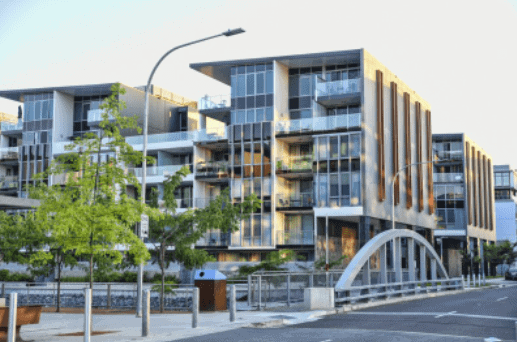Despite extensions to the Home Guarantee Scheme, buyers may still struggle to afford a house in some of Australia’s cities.
The federal government announced an expansion of the scheme from 10,000 places to 50,000 places during its budget announcement last month.
These places include an extra 25,000 places for first home buyers with deposits as low as 5 per cent, 10,000 places for people to buy new builds in regional areas and 5000 for those trying to buy after not owning property for at least five years.
The scheme facilitates underwritten loans through the government with deposits of at least 5 per cent, allowing buyers to get into a house sooner as they will spend less time saving a deposit.
The federal government also announced an expansion of the price caps for housing in each area eligible for loans under the scheme.
The expansion includes an additional $100,000 to the cap in capital and regional cities including Newcastle and Lake Macquarie, Ilawarra, Geelong, Gold Coast and the Sunshine Coast, with other areas getting an increase of between $50,000 to $150,000.
This would theoretically open up more houses for eligibility under the scheme.
REA Group’s Cameron Kusher said that even with the expansion of the price caps, house prices in certain cities remained out of reach for many and might redirect buyers towards apartments instead.
“If you look at Sydney, Melbourne, Hobart and Canberra, the cap for houses is still lower than the median value for a house in those cities,” Kusher said.
“Less than 50 per cent of the market meets that, so people will probably be more inclined, in those cities in particular, to look for apartments at that price point in order to get involved with the scheme.
“Typically, apartments are more affordable than houses anyway so we will see more of this scheme go towards apartments.”

Capital Economics’ senior economist Marcel Thieliant said that while there would be a small boost in the short term, the Reserve Bank raising interest rates sooner than previously intended will only make things worse.
“The expansion of the scheme will only result in a modest boost to housing demand,” Thieliant said.
“And with affordability set to worsen sharply as the RBA hikes interest rates, it won’t prevent house prices from falling next year.”
Real Estate Institute of Queensland chief executive Antonia Mercorella said the expansion was not enough to address housing affordability.
“While expanding the Home Guarantee Scheme is a good start and definitely a step in the right direction, it must be acknowledged that 50,000 places is not nearly enough to meet national demand,” Mercorella said.
Home Guarantee Scheme price caps
| Home Guarantee Scheme | ||||
| 2021-2022 FY | 2022-2023 FY | |||
| Area | Capital city and regional centre | Rest of state | Capital city and regional centre | Rest of state |
| NSW | $800,000 | $600,000 | $900,000 | $750,000 |
| Vic | $700,000 | $500,000 | $800,000 | $650,000 |
| Qld | $600,000 | $450,000 | $700,000 | $550,000 |
| WA | $500,000 | $400,000 | $600,000 | $450,000 |
| SA | $500,000 | $350,000 | $600,000 | $450,000 |
| Tas | $500,000 | $400,000 | $600,000 | $450,000 |
| ACT | $500,000 | $750,000 | ||
| NT | $500,000 | $600,000 |
^ Source: Commonwealth of Australia, 2022 Federal Budget
Canstar editor Effie Zahos said it was not only a matter of how many houses were within the price range and therefore eligible for the scheme, but whether buyers were able to afford them in the first place.
“On a positive note, the Home Guarantee Scheme helps first-time buyers enter the market sooner with a smaller deposit, allowing them to save on lenders mortgage insurance,” Zahos said.
“But that’s not the whole picture.
“The government may have increased property price caps under the scheme, but this doesn’t necessarily mean borrowers can afford the repayments, especially when you consider the average gross Australian wage is $90,917.”
Canstar’s analysis looked at the level of income required for buyers. They looked at single buyers, as well as couples with two children and a car loan, who pay a 5 per cent deposit and take a loan at a 2.99 per cent variable home loan rate with a even split in earnings.
NSW buyers needed the largest income to afford the higher end of the price cap, where house prices in city centres are capped at $900,000.
In that state, single buyers will need an after-tax income of $149,868 annually, while a couple would require an after-tax income of $155,934, according to Canstar.
Melbourne and Victorian region cities had prices capped at $800,000, so buyers would need to earn $135,892 as a single and $142,918 as a couple.
Zahos was also wary of the effect of the RBA increasing rates on people’s ability to repay.
Canstar has reported that if the RBA raises its rates by 2 per cent, monthly repayments for those borrowing $900,000 over a 30-year loan would rise by $957 and by $745 for those borrowing $700,000.
“The first Reserve Bank cash rate increase is expected to happen in June, so prospective buyers should make sure they factor potential rate rises into their budgets, and allow for extra financial wiggle room ahead of time,” Zahos said.
House prices have risen nationally by an average of $17,000 during the first quarter of 2022. price growth in Melbourne and Sydney has started to decline while prices in Adelaide and Brisbane are still on the rise.
Article Source: www.theurbandeveloper.com
from Queensland Property Investor https://ift.tt/hpl6u54
via IFTTT